
Anchor Text Distribution: Avoiding Over Optimization
The ‘over optimization’ of anchor text has been coming up a lot recently in conversations that I have been having and has been the subject of a few recent blog posts. For the sake of this post and to quell any arguments stemming from the phrase ‘over optimization’, I am, for this post, defining the term as: building too many links with targeted anchor text such that they a) no longer provides value or b) actually takes away value – basically you’ve built too many targeted links and you’re not seeing your rankings increase.
When I have talked to people about this recently, I have suggested that a 7:3 ratio of non-targeted: targeted anchor text would be a good frame of reference for emulating a ‘normal’ link profile. I got curious about this though and decided to do some research. I looked at product and category pages on ten different websites - these websites are all large national and international brands/ecommerce sites that are well linked to. Between the ten sites I analyzed the anchor text associated with 28 category pages and 31 product pages.
For each of these pages, I downloaded the anchor text report from OSE and looked at whether the ‘Number of Linking Root Domains Containing Anchor Text’ were optimized or not. Specifically, I looked at if the anchor text had the following attributes:
- Brand Name - The brand name is the anchor text, e.g. Giant Bicycles
- Branded - The brand was included in the anchor text (these did not include anchors that were the brand name), e.g. this cool company, Razoo
- Keyword Branded - The anchor text combined a keyword (exact/phrase/partial match) and the Brand Name, e.g. a ton of motorcycle helmets at Dennis Kirk
- Exact Match - The anchor text exactly matches a keyword, e.g. Downhill Bike
- Phrase - The anchor text contained a keyword phrase or partial match anchor text, e.g. the monthly mountain bike magazine I get
- Random - The anchor text does not contain the brand or any keywords (or partial keywords), e.g. this website
- URL - There were no actual anchors, it was just a URL, e.g. http://www.malibuboats.com
I chose to only look at the number of domains linking with these anchors as site wides can disproportionately skew these ratios pretty quickly.
Finally, I looked at the sources of the links and did not include pages if it looked like they had links manually built.
Ok, now on to the interesting part.
Targeted vs. Non Targeted Anchors
Across category pages and product pages, I found that 34.6% of links were targeted (targeted anchor text collectively refers to exact match anchors and phrase while non targeted anchor text is everything else).
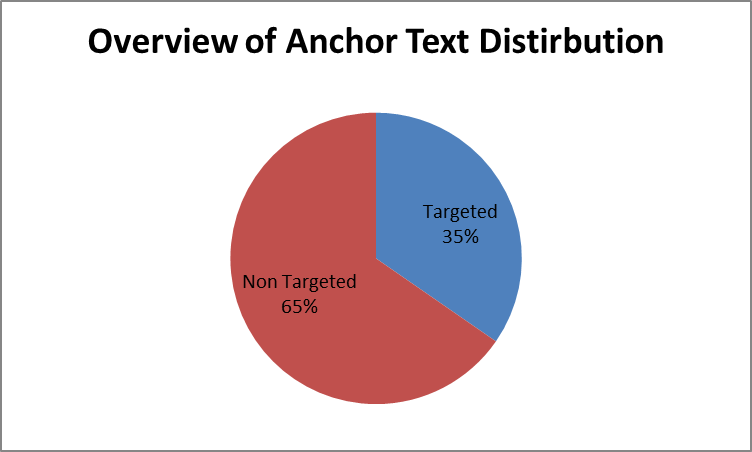
Here is a breakdown of this distribution:
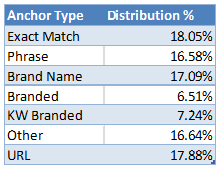
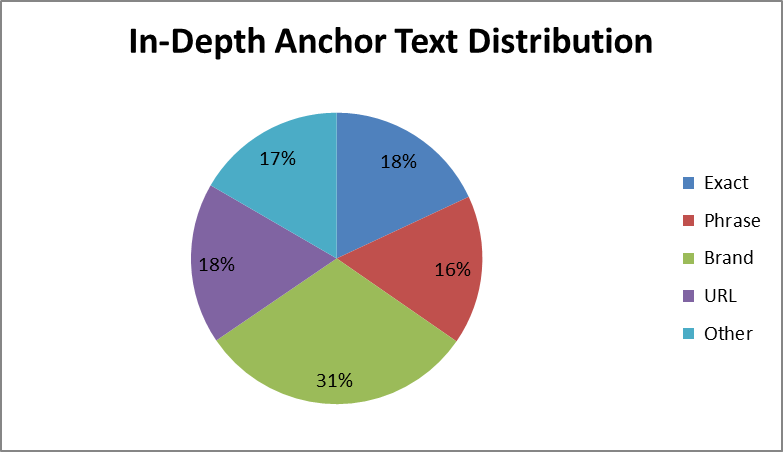
Here is a simpler breakdown, consolidating brand related anchors:
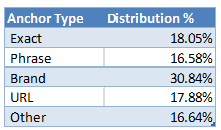
Category Pages
If we take a more in-depth look at category pages, we find some variance from the collective distribution above. The data shows that only 25% of links to category pages are targeted - people are less likely to link with good keywords to your category pages.
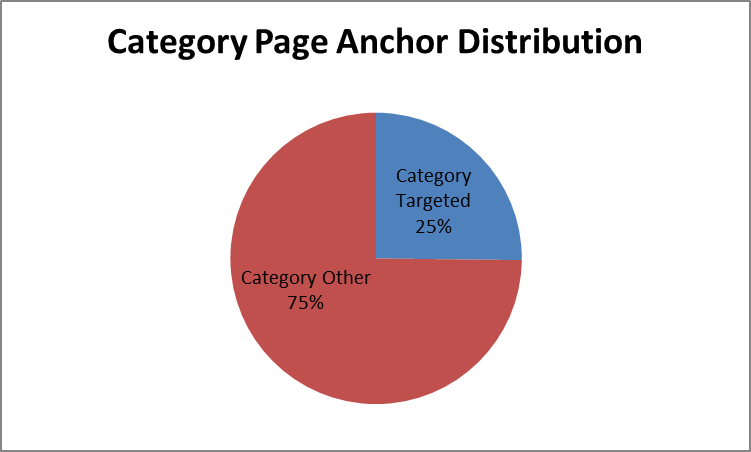
Looking at the ‘other’ anchor text distribution, the number of links for branded and URL anchors increase 5% and 7%, respectively. Most of the gain in the branded links were keyword branded links.
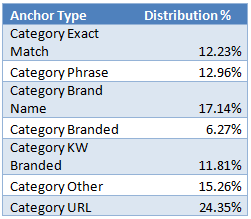
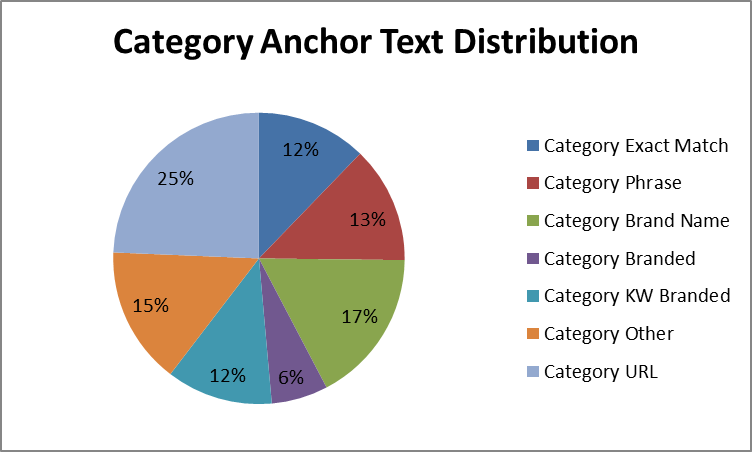
Product Page
The product pages show a higher proportion of targeted anchor text, making the targeted and non-targeted distribution roughly equal.
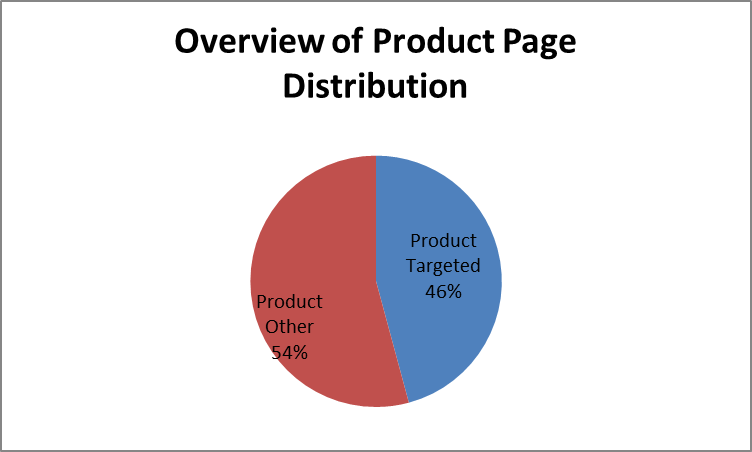
Looking at the distribution of anchors for product pages, we find that there are more links with exact match and phrase match links to product pages than to category pages. Exact match links jumped up about 7% and phrase match jumped up about 4%.
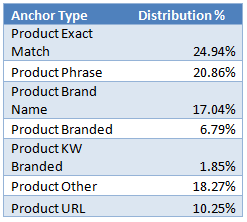
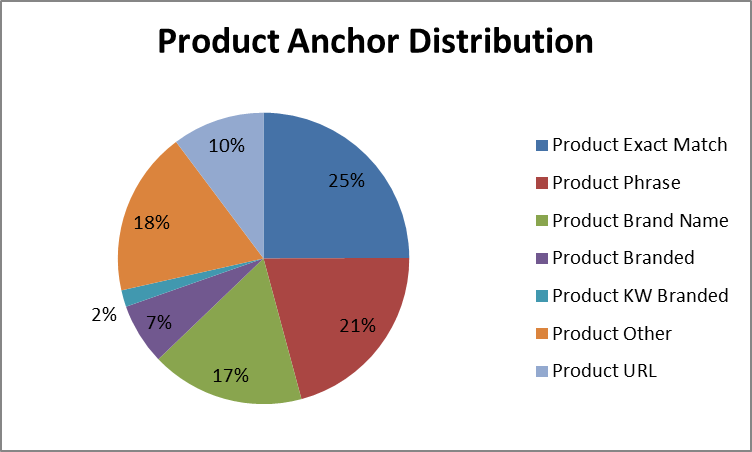
So What Does This Mean
For a lot of people, this means you should probably decrease the amount of targeted links you are building and add in some varying anchor text. It is important to keep in mind that this research, while it was time consuming, is by no means exhaustive, so you shouldn’t take this as fact. That said, I think it gives a pretty good rough estimate of what normal might look like. I like to be a little more conservative so, especially with the product pages, I will probably keep trying to stick to the 7:3 ratio I first mentioned.
If you have been doing a lot of SEO work and are still having trouble ranking, this is a factor that you might want to look at as you may need to start building different anchors to balance out your profile.
The sites sampled spread several industries. Your industry will probably look a little different, as such, you should do your own research and determine what 'normal' looks like for your industry. To do this, just pull the anchor text report from OSE for sites from the SERPs. If all the pages ranking have a lot of SEO'd links, look at those sites and try to find non optimized pages and use those to help establish your baseline.
To help you do your own analysis, I made a Google Doc that will help you calculate these percentages.
The author's views are entirely their own (excluding the unlikely event of hypnosis) and may not always reflect the views of Moz.




Comments
Please keep your comments TAGFEE by following the community etiquette
Comments are closed. Got a burning question? Head to our Q&A section to start a new conversation.